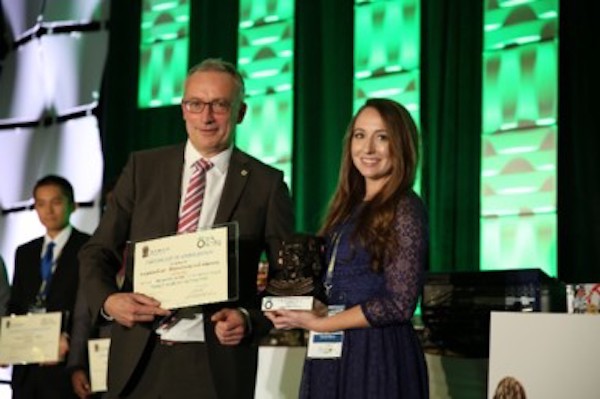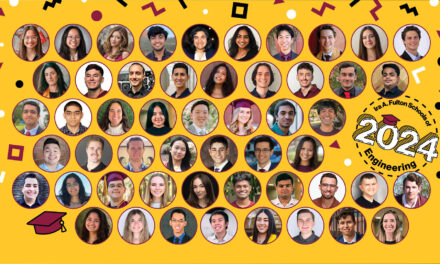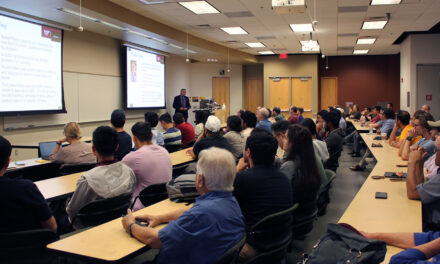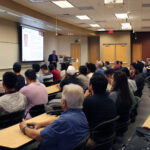
Construction engineering achievements earn Fulton Schools alum a top award in her field

Amanda Kerr (at right) is presented an award at an International Tunneling Association event. Photo courtesy of the International Tunneling Association
Ira A. Fulton Schools of Engineering Schools alumnus Amanda Kerr recently received a prestigious international honor for her engineering and construction achievements.
Kerr was named the 2019 Young Tunneler of the Year by International Tunneling Association as part of the organization’s annual awards program for “ground-breaking innovation and outstanding projects in tunneling and underground space use.”
As a student in ASU’s Barrett, the Honors College, Kerr earned an undergraduate degree in civil engineering in 2015 and a master’s degree in construction engineering in 2016 through the Fulton School’s 4+1 accelerated graduate degree program.
Kerr held leadership positions in the ASU chapters of the Chi Epsilon civil engineering honors society, the American Society of Civil Engineers and the North American Society for Trenchless Technology.
She also participated in STEM outreach activities, particularly focused on underground infrastructure, for local elementary schools and youth programs.
“It is rewarding to see one of our graduates receive such a competitive and prestigious international award. Amanda was always a dedicated student who excelled in the classroom and in student leadership,” says Professor Samuel Ariaratnam, chair of the construction engineering program chair in the School of Sustainable Engineering and the Built Environment, one of the six Fulton Schools.
Kerr began her construction career doing heavy civil work with the Southwest branch of Granite Construction on the Tucson International Airport project.
She has worked for five years for Michels Tunneling Operations, a division of the Michels Corporation, a leading infrastructure and utility contractor with facilities throughout the United States and in Canada.
Among her more recent projects is the 4.5-mile-long tunnel for the Blacklick Creek Interceptor Sanitary Sewer in Ohio, during which a boring machine finished excavation of the tunnel three months earlier than planned, enabling the entire project to be completed more than 14 months ahead of schedule.
According to the Michels company’s website, large crews worked continuously on the project, using a 12-foot diameter earth pressure balance tunnel boring machine to install the 10-foot inner diameter, fiber-reinforced precast concrete final liner.
The machine and tunnel passed through two intermediary shafts and negotiated 12 curves covering approximately 70% of the alignment.
A particular challenge, the company reported, was the high variability of ground conditions — necessitating a tunnel boring machine custom-designed to handle shale rock as well as soft ground.
Currently a lead project engineer for the Michels large diameter tunneling division, Kerr says she values how the projects she works on “provide many opportunities for quick thinking and creativity in a technical environment,” and she “looks forward to the challenges to come” throughout her career in tunneling.
“We are overjoyed that Amanda has been recognized for her accomplishments,” says Professor Ram Pendyala, interim director of the School of Sustainable Engineering and the Built Environment. “We strive to prepare our students to tackle complex projects and challenges in the real world, and Amanda’s outstanding work in tunneling exemplifies achievement of this goal.”



































